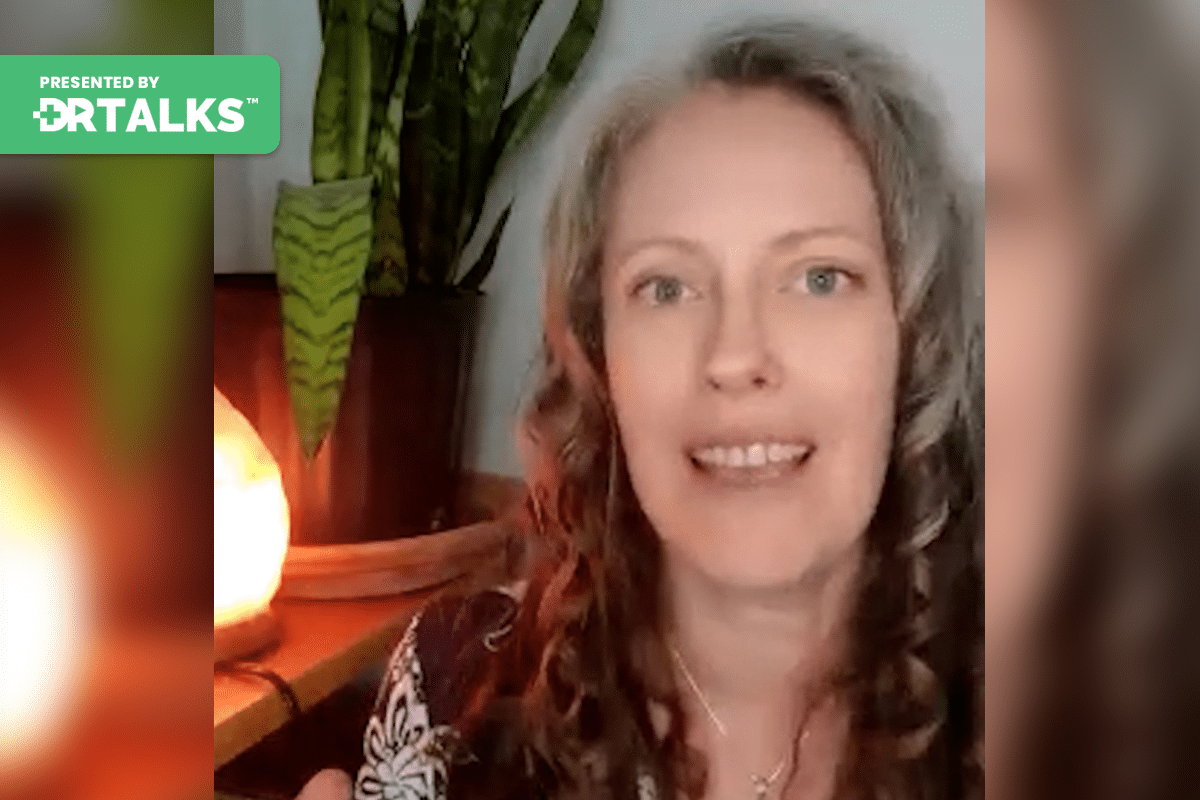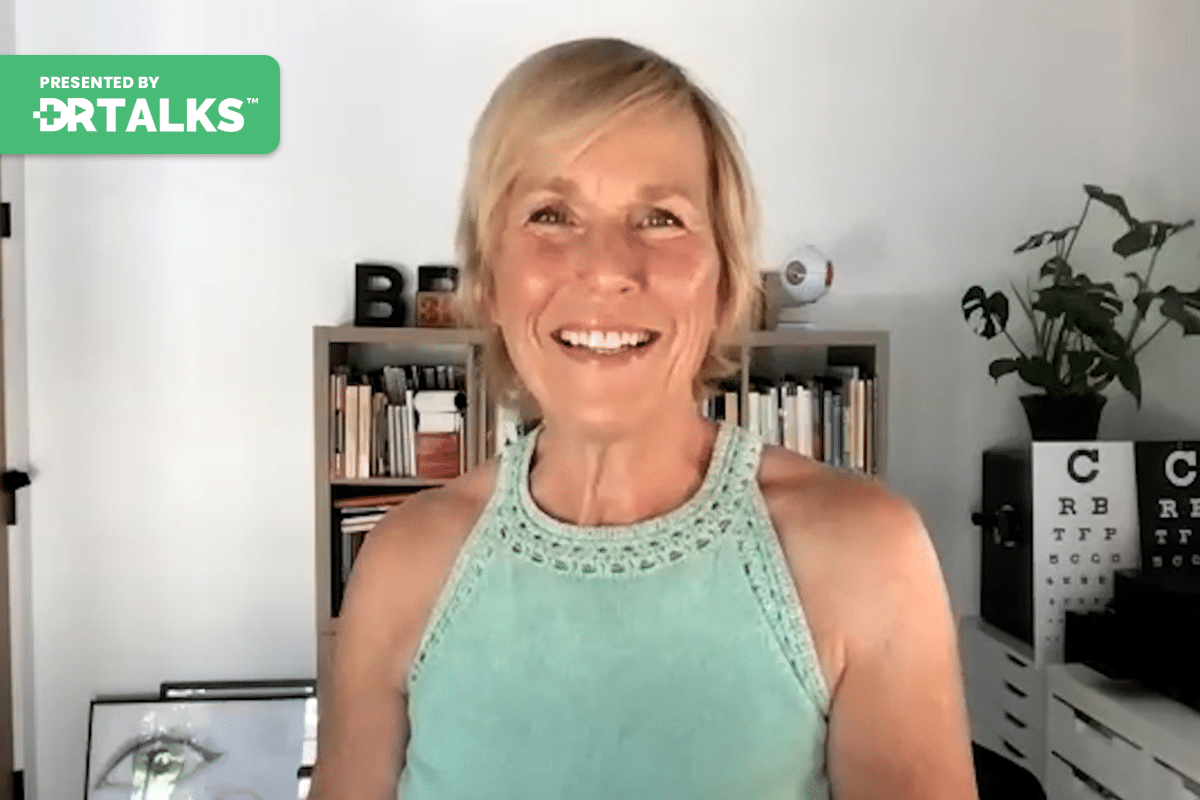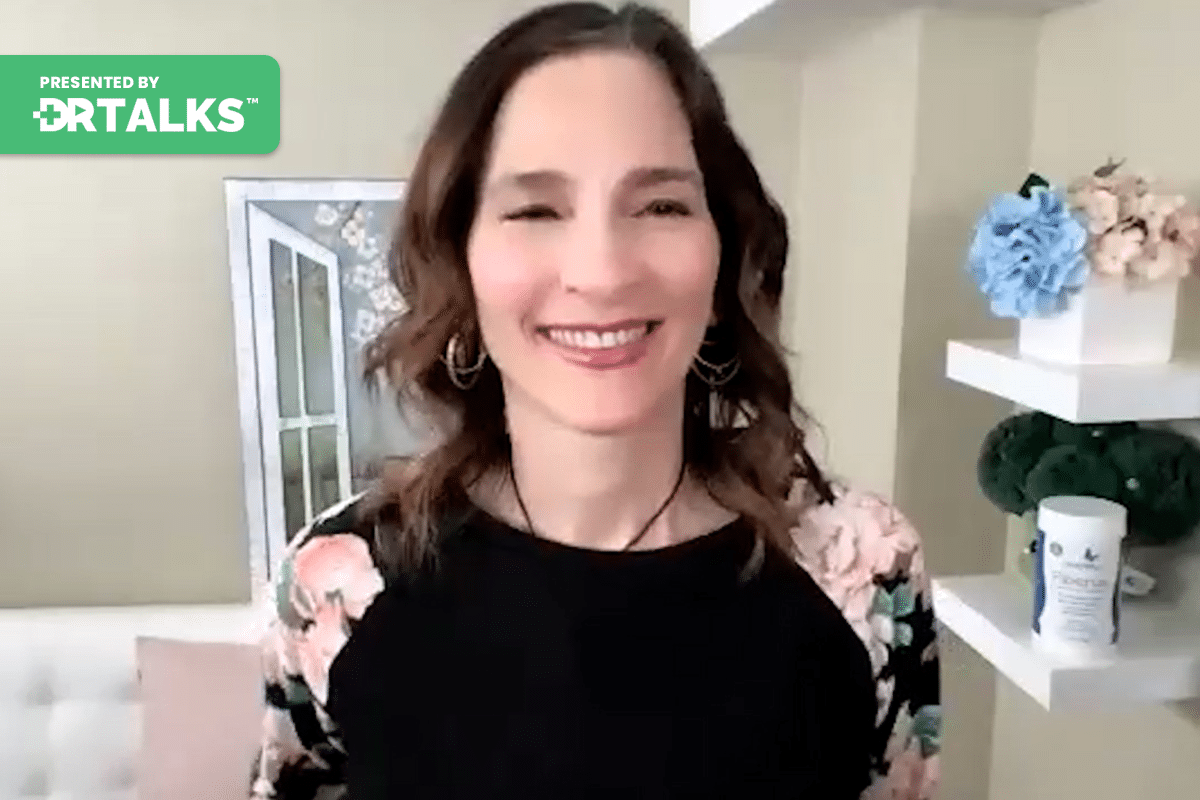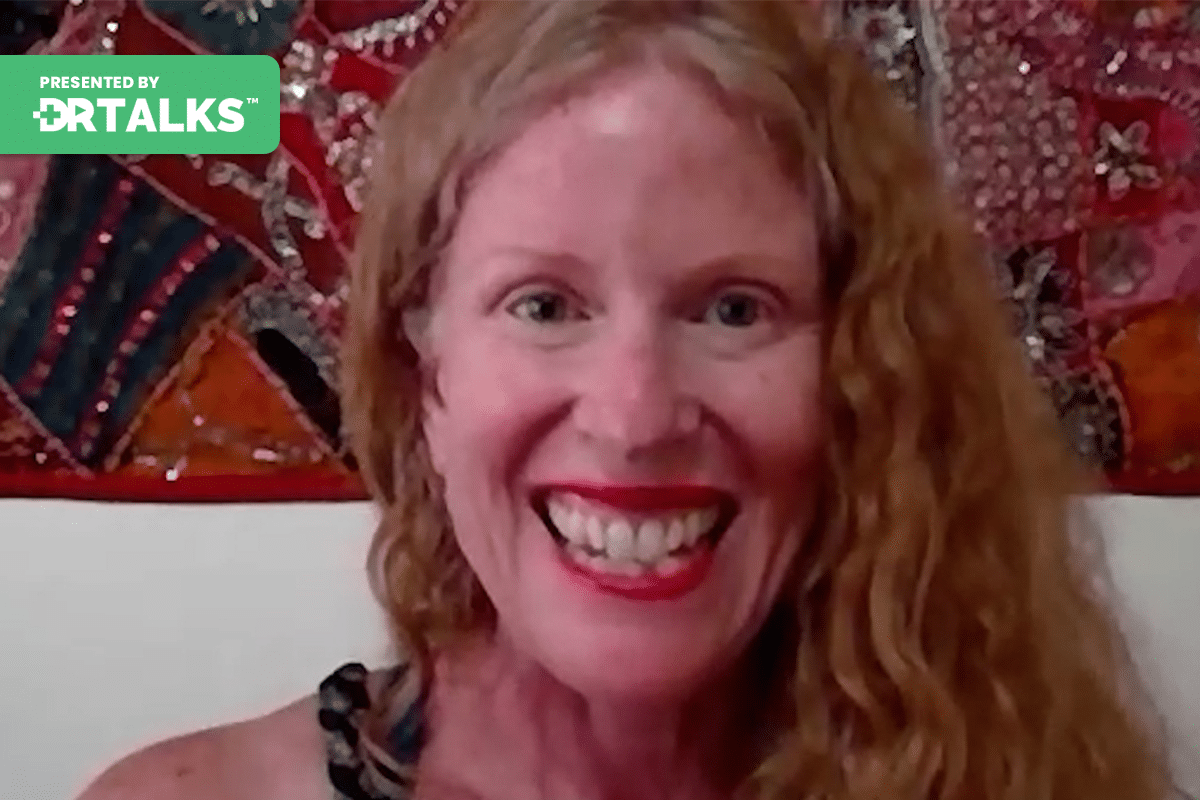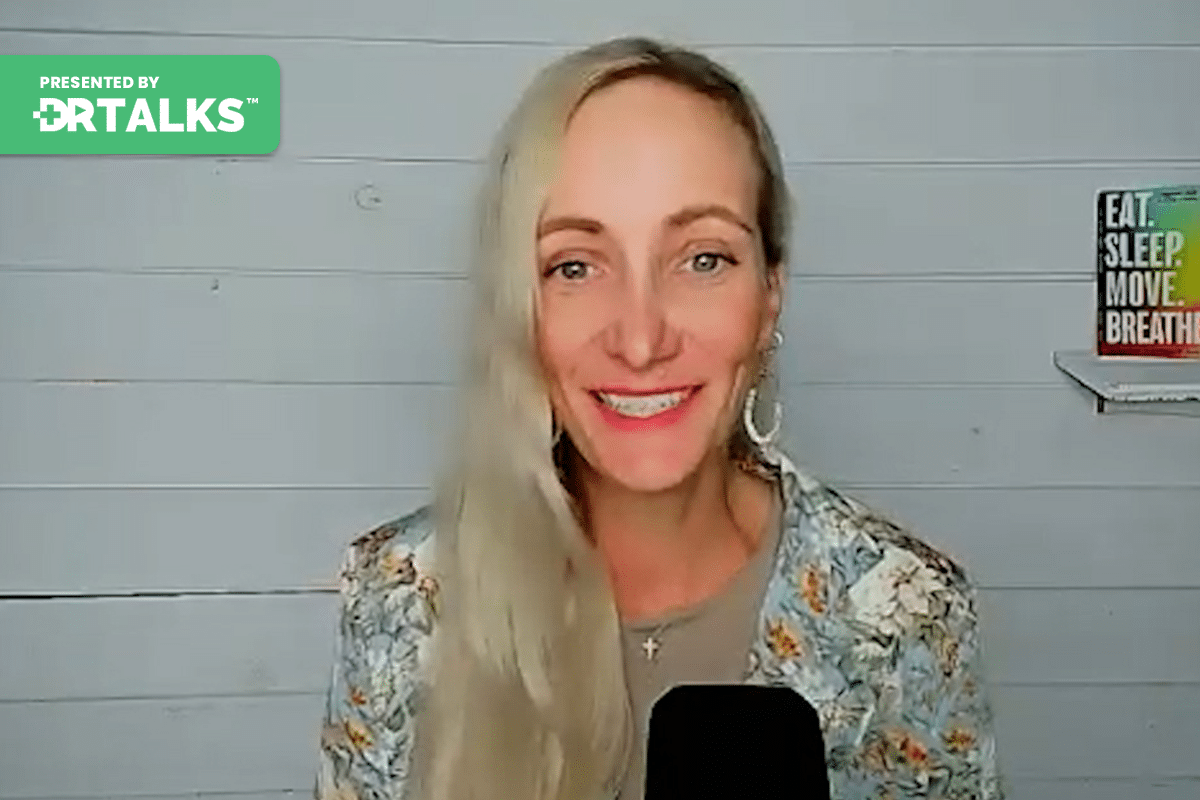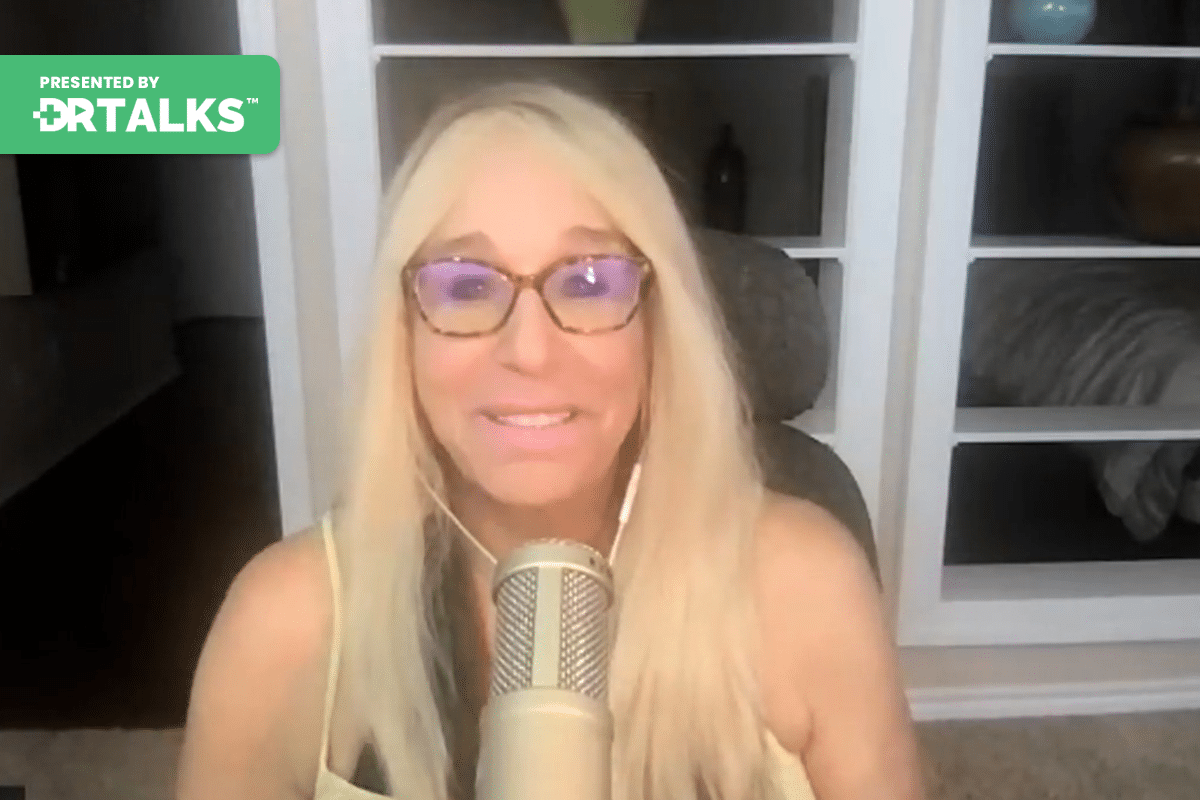Join the discussion below
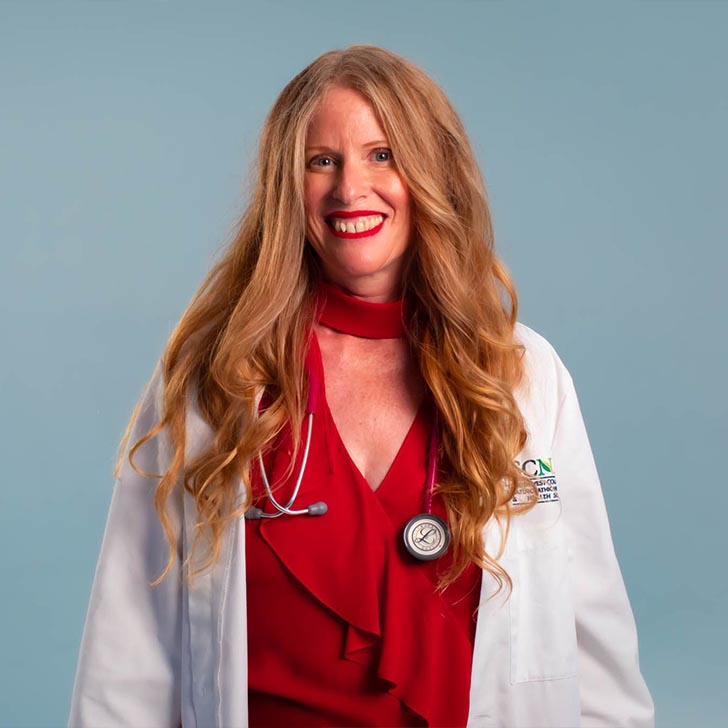
Dr. Sharon Stills, a licensed Naturopathic Medical Doctor with over two decades of dedicated service in transforming women’s health has been a guiding light for perimenopausal and menopausal women, empowering them to reinvent, explore, and rediscover their vitality and zest for life. Her pioneering RED Hot Sexy Meno(pause) Program encapsulates... Read More
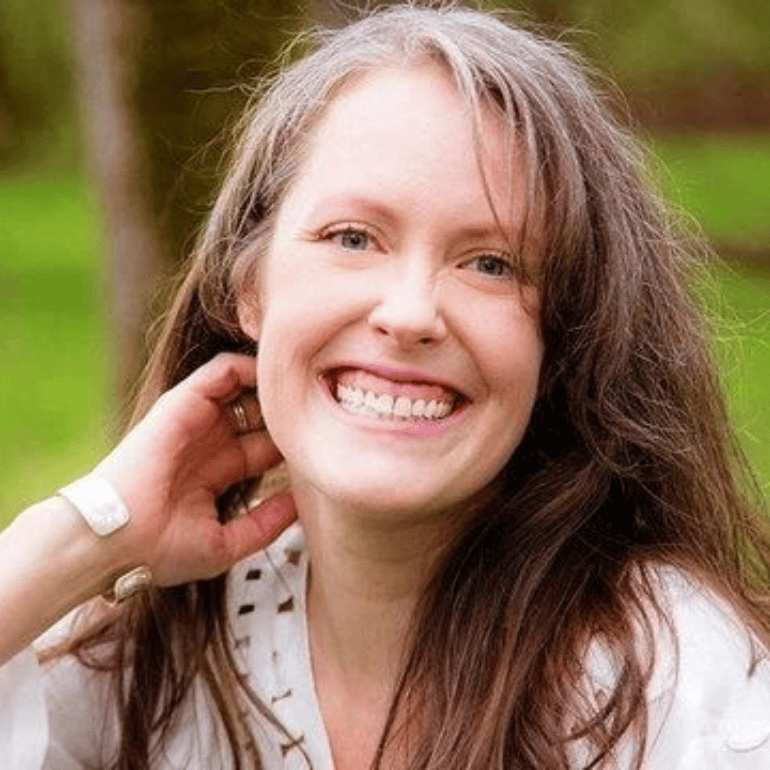
Catherine Clinton, ND is a licensed naturopathic physician with a focus on gut health, autoimmunity and psychoneuroimmunology. Respected author, speaker, pediatric health advocate, Dr. Catherine practices in Eugene, Oregon. When in medical school Dr. Catherine was diagnosed with and healed from an autoimmune disease that effects the gastrointestinal tract, leaving... Read More
- Understand how your internal terrain affects your menopause journey
- Learn about the impact of your external environment on menopause
- Discover ways to nurture your terrain to support a smoother transition through menopause
Related Topics
Aging, Health Coaching, Living Well, Longevity, Menopause, Mindset, Nutrition, Stress, TerrainSharon Stills, ND
Welcome back everyone to the Mastering your Menopause Transition Summit, I am your host, Dr. Sharon Stills, it’s such a joy and a pleasure to be back with you all again and to be here with my special guest today, she is a colleague and a dear friend and someone who I just admire and appreciate so much and I’m so glad she was able to take some time out of her busy schedule and be here with us. My guest is Dr. Catherine Clinton, and she is a licensed Naturopathic Physician, she specializes in gut health, autoimmunity, psychoneuroimmunology, pediatrics. She is really the tender terrain doctor and that’s just so near and dear to my heart, ’cause I am all about terrain-based medicine and so I wanted to have her on. We’re gonna have a lovely open-hearted conversation that you all are gonna enjoy and learn so much about how your internal and external environment and the terrain of your body impacts your whole menopausal journey, so, welcome, dear Catherine, I’m just beaming that you’re here.
Catherine Clinton, ND
Well, thank you so much for having me, I’m honored to talk with you today and I’m just thrilled that you’re doing this summit because this is what we need, we need to be empowering women in that really empowering phase of life.
Sharon Stills, ND
Yes, this is all about empowerment and education and knowledge and just knowing it’s all in you, it’s all in you. So tell us just a little bit, tell us your story before we start diving into what is the terrain and all of the good stuff.
Catherine Clinton, ND
Absolutely. I got my start in natural medicine actually assisting with a midwife and I did that for six, seven years, she actually became my midwife and it wasn’t very far into apprenticing with her that I knew that midwives are cut from an amazing clock that I’m not made of. That’s when I started to research about naturopathic medical school and when I actually, I had to go back and do all my prerequisites ’cause I was a philosophy major so, when I finally ended up at the National University of Natural Medicine in Portland, it had really changed and it was really kind of modeled after traditional medical school with that initiation long hours, long clinic hours and it was the straw that broke the camel’s back so to speak, I was diagnosed with ulcerative colitis, Lyme disease, Hashimoto’s thyroiditis, multiple GI infections and toxins, and it was a journey that was a great word that you used, it was a journey sort of piecing my physical health back together and that’s when I really started getting excited about psychoneuroimmunology and how our thoughts affect our health and how that relates in a bigger sense to the terrain around us, looking at mitochondrial research and really getting into how amazing our ecosystem is and how intricately pieced together it all is in the most beautifully intertwined system and that has gotten me where I am today, tending our terrain and really interested in not only what our internal environment is doing, but also our external environment and how that’s impacting health.
Sharon Stills, ND
Beautiful, so tending our terrain, let’s just start, ’cause that might be a new word to some of the women listening, so what does that even mean? What is the terrain?
Catherine Clinton, ND
Absolutely. When we talk about terrain, so oftentimes in the medical sense, we’re talking about what’s happening in your body, what’s your hormone status? What’s your inflammatory status? What’s happening with your neurotransmitters and cytokines and all of these things happening on the internal level. It encompasses what your thoughts and emotions and not only the ones that you’re having presently, but past emotions, past traumas and stress, all of that plays into what our internal environment is. Our relationship with the microbial world, all of these things are in that internal terrain of the body. We know that we don’t stop at the barriers of our skin, that our internal terrain really extends out into the environment around us and we can clearly see, I mean, both instinctively and with a intuitive sense, we know this, but in the last few decades, research has really exploded around this and we now know that the external environment around us has an immediate and lasting effect on our biology, and so that really sort of is a broad stroke of what terrain is and the neat thing that I really love about terrain medicine is that it doesn’t distinguish between my health and the health of the world around me, there’s really this continuum that we see that really calls to us to tend not only to our health, but to the health of the planet we live on because clean air, clean soil, clean water, all of these things are foundational.
We really can’t have a talk about what it means to be healthy without talking about those things, clean food and the air we breathe and the water we drink, it’s such a primorial relationship that we have. Our biology is constantly looking for that, it’s looking for where is our place in this ecosystem. And are we in the right place? Do we need to be making moves to get back to that place? Many of what you and I see as physicians is that disconnection, that misplacement, that leads to chronic illness that leads to some of the discomfort and disease that can happen in perimenopause, in menopause, solely coming from that disconnection and discomfort of where are places in this greater ecosystem.
Sharon Stills, ND
For the women listening, who are saying, “Yes, where is my place?” Where do they start? How do you find your place? How do you define that? Any words of wisdom?
Catherine Clinton, ND
Absolutely. The first thing I like to talk with my patients about when I’m talking about this and I see a lot of patients, just so listeners and viewers know, I deal a lot with autoimmunity, gastrointestinal conditions, chronic things, so when people come and see me, they are not always working in a preventative way, it’s usually like I’ve been to all the doctors, I’ve done all the stuff, nothing’s working. I try to start very simply to help them regain that place in the world and one of the favorite things that I like to work with women on is rekindling that relationship we have with the solar system, with our sun and that to me is really a wonderful window to open and so easy. I work with people that are chronically sick, so when I say balancing our circadian rhythm, getting A.M. sunshine, sometimes that’s met with quite real resistance. People are ill and they have a hard time getting out of bed and for me to say, go outside in the morning sun before 10:00 a.m. and if you can put bare hands or feet on the ground or on a tree, it’s just like, what are you talking about woman? I’m not well. So I have them wrap up in a blanket and drink their tea by an open window. Something as simple and benign seeming as 10 minutes in the morning sunshine seems like it’s so simple and it can’t have these effects but what we see and what we know is that it is one of the most powerful things we can be doing to balance and align our biology with our external terrain. When we get up and expose our skin and or our eyes to morning sunshine, and I’m here in the Pacific Northwest in Oregon, sometimes the sun is just gray for months. I’m not talking tropical sunshine, it doesn’t have to be your favorite beach location, I’m talking natural lighting, so getting outside before 10:00 a.m., letting that natural light, whatever it may be, hit your eyes, hit your skin, what that does is it releases a bunch of dopamine that happy, creative, feel good hormone, it also dumps a lot of serotonin. Again, that creative, feel good, energized hormone, neurotransmitters that help us really get through our day with energy and creativity and that will be enhanced if you can get out in natural light throughout your day, if you can keep that connection with the sun throughout the day.
And then at night, when the sun goes down. If we can lower that, if we can follow that relationship and that rhythm and lower the lights. And again, I’m here in Oregon, so in the winter it gets dark at 4:35 and I’m not saying that that’s when we go to bed, but our big overhead lights, we turn down, we switch to something like a salt light candle or a fire or candles, red lights, lower tones, less blue-green light and what that does is when we sync with the sun and lower that light, when the sun sets, it takes that big release of serotonin that we had in the morning and daylight from that exposure to the sun and it takes that serotonin transforms it into melatonin so that we can get a good sleep, so that we can balance our immune system, balance our endocrine system, it is such a wonderful way to build resilience and that is all based on our relationship with the sun. That’s something that I encourage everyone listening today.
If this isn’t something that you have explored already, this is a wonderful way to open up that window and see the physical benefits, I mean, there are loads of emotional benefits, I think that we live in such a disconnected society that define comfort and love and relationship with the sun offers such peace so many of us don’t work in a safe environment, don’t live in a safe environment, maybe don’t have a safe family, so finding that safety and rhythm in the solar system, in the rhythm of the sun is amazing. It also provides such a physical benefit that I challenge everyone watching and listening today to try it for a week and notice the difference because this is what I challenge with my patients and I’ve never had anyone come back saying I was alright, I did the morning sunlight and it was fine, but it’s always a huge window.
Sharon Stills, ND
Beautiful, so I have a couple of things to say. First, I love that the first thing you’re bringing up is the sun, it reminded me when I was in medical school, way back in 1997, and we had to write a paper on our favorite supplement and I wrote my paper on the sun, I so appreciate this and I say it a lot, and this is so important to me when we’re mastering this menopause transition, why I named the summit that, that we remember there’s so many pieces surrounding us and all those supplements are fantastic and I take plenty of them, trust me. That the real healing comes from all these other things the supplements just supplement that and so we are taught to fear the sun, lather up, cover up, stay inside, the sun causes cancer, and we’ve been fed this BS line because the sun is providing life, without the sun there is no life. So to be in tune with it is so important to owning and proclaiming your part of the earth of the connection and so I just am curious then also I’m sure some women watching, and I really want women to own this practice and if all 100,000 of us watching do this, it will have this ripple effect throughout the globe because we’re from all over. So, I would think some questions that are coming up first, so when if I go outside in the sun, what do I do? Do I just stand there? Or should I be naked? Do I have clothes on? Do I meditate? What is the actual practicality of it?
Catherine Clinton, ND
Yeah, absolutely. And I’m just gonna chime in on that cancer piece, because we saw such a divide in our society here in the U.S. and Europe as well, when about 100, 150 years ago, when we really started manufacturing and industrializing our food, our medicine, our agriculture, we saw a real left turn from what we had always evolved with as humans as far as what we ate. As soon as we had a predominant amount of our food from processed manufactured producers, we saw those skin cancer rates just explode, and the flip side of that is that we know that food, real whole food that’s grown by the sun is top full of those antioxidants and those phytochemicals that act as our natural sunscreen. I’m a very fair, I think you can see, I’m quite a fair skin lady and I love my sun, so what I do is I go out and as soon as I start to get that red erythema from the sun, not a sun burn, it’s that warmth, not right before sunburn, but in the continuum, so you’re in the sun, you start that exposure, you start to feel those capillaries open up and that warmth, when that happens, I’m fair enough to know that a sunburn isn’t too far away, maybe half an hour away, so I move to the shade and the interesting thing is that we have such this dichotomy in our head of like sunshine, sunburn, bad, shade, you’re away from the bad stuff and really sunlight is information, it is a nutrient all into its own. When I go back into the shade, I am still getting that natural light reflected off of my skin, off of the grass, off of the trees, just in the environment around me and while I’m protecting my skin, because it is fair and isn’t going to handle hours in the hot sun, in the hot summer sun, I also am reaping the benefits from the shade. That sort of putting context around what is the ideal sun exposure, it is so varied on the individual. For me to tell myself that I need to go spend four hours in the tropical sun to really get my vitamin D stored up, that’s not gonna be appropriate, it’s so individual depending on what our solar capacity is to take in that light, those photons without burning our skin but if that window is very short, that doesn’t matter, if we’re in the shade, we’re still completely reaping the benefit of that.
Sharon Stills, ND
I’m so glad you’ve brought that up and clarified, yes, ’cause we’re not saying to go get horrible sunburns and that can lead to free radical damage and a lot of it does have to do with your antioxidant capacity and making sure that you are healthy on the inside and we didn’t talk about this before, but that’s pretty much me too, I know my limit, I’m about a 30, sometimes 40 minute, depending upon how strong the sun is and then it’s off to the shade and I don’t use sunscreen because most of the sunscreens are so toxic and I want my skin to be breathing and there’s still a lot, as you mentioned that you can be enjoying in the shade, so important. I think most people ’cause you and I are pretty fair, most people, you can work your way up I remember at first for me it used to just be five minutes and then it was 10 minutes and then I could tolerate 15 minutes and so I think you can work your way up and expecting to have a half hour of sunshine a day as a nutrient, as you say, as information is such a good healthcare practice, so, super important. Back to the morning sun, when they go out there, can they be drinking their water, just walking around, what are do they doing?
Catherine Clinton, ND
Absolutely, so, my favorite thing to do is to absolutely put my body in contact with the earth. I’m barefoot and moving because there is some amazing things happening in our body when we move. Our fascia in there is really piezoelectric, so when we put pressure on it by moving, it creates energy, it creates heat that drives our mitochondria and really affects our overall health. We see that being outside of the sun, if you can, or in the natural light I should say, and moving is really, really a double whammy there. You’ve got the movement in the natural light, they’re both doing such amazing things for, we talked about serotonin and melatonin, but they’re also doing amazing things for your mood, for your energy, for your mitochondria, which help with that brain fog, with energy, with hormones, with really mastering that transition into menopause. I think that mitochondria are such a huge piece of that because they really hearken back to our femininity and our feminine strength that mitochondrial DNA is passed down on the mother’s side, it’s really those maternal genes and the reason for that is it is so important that those mitochondria work and we think of them as like the energy powerhouses.
But they really are also messengers and they really work in a matriarchal sort of system where they are sharing information and energy and that A.M. sun is one of the best primers for that. We can be moving in the A.M. sun, and again, so small steps are the best steps. If it is drinking your tea or coffee by an open window in the morning, that’s a great first step, if we can work up to 10 minutes to 30 minutes in that natural light before 10:00 a.m. with some kind of movement, whether that’s walking, whether that’s yoga, whether that’s stretching, qigong, shaking out all the bad vibes, dancing, I mean, whatever kind of movement we can have in a natural setting, in the natural light in the morning really sets our biology up to know that we’re in a safe spot, we can do what we need to do and we don’t have to go around kind of trying to plug the holes in the dam with our fingers. That’s what I see so oftentimes with patients that are having trouble transitioning in that menopausal phase, it’s because their body is just inundated with all these messages of toxin foods, toxins in the air, stress from our environment, from work, from our social environment and it’s craving, our biology is craving those signals that we have evolved with over millennia and moving in the sun in the morning is one of the biggest signals we can send our biology.
Sharon Stills, ND
Are we all committing? It’s like pinky swear, we are gonna do this and I love it ’cause I feel like when we’re talking about transition, to me it’s getting out in the morning sun and putting my feet on the ground and today the threat was, it’s starting to heat up here in Arizona, so I was like, ooh, the ground is getting toasty, and doing a walking meditation, it’s such a beautiful way to transition from sleep to the day and I’ve personally had to work on this because I was one of those wake up and go get the phone from the other room and start checking email and see what my assistant has to say and it’s a much more loving, act of self love towards yourself, if you just 10 minutes, give yourself that transition of I’ve woken up, I’m present to waking up, I feel my body waking up, I feel myself in the bed, I give gratitude and thanks, and then going outside and meeting mother nature and saying hello to the earth and putting your feet on it and connecting and saying, okay, I’m curious to see what’s gonna flow through me today. What kind of magic is gonna occur in this day? That’s such a beautiful gift to give yourself and if you are short for time and you wanna drink your morning tea or your water, while you’re doing it, there’s lots of ways to improvise but it is such a beautiful transition and so.
Catherine Clinton, ND
It is, it is, and it really gets back to that idea of coherence. We are part of this bigger ecosystem and when we are transitioning through our seasons, if we are fighting them and resisting them, we kind of get in that decoherent state and if we can align and so coherence is where our vibration, our frequency is matching the frequency of the world around us. When we are waking up and checking the phone and just, oh, that’s a do list and da blah, blah, blah and there we go and it’s 11:30 and we haven’t even checked in on our inner dialogue or anything like that, that really creates this chaos that eats away at that coherence.
There is a universal coherence, there is a planetary coherence, there is an ecosystem coherence that we belong to and when we can start our day with something that you just mentioned, like that routine that puts us in coherence, aligning not only our internal, our brain and our heart and all of those different energetic flows, but aligning our internal coherence with the coherence of the world around us, with the rhythm of the sun, with the temperature of the weather, with the elements that are around us, what that does is it is such a powerful builder of resilience. When we’re talking about how we can best weather all of the seasons of being female, how we can transition into that wise menopausal phase, if we can cultivate that coherence both internally and externally being coherent with the world around us, then that transition is just like the seasons. The world isn’t like, whoa, we’re not ready for spring, it flows and when we can match that flow and that coherence, that just takes our resilience to a whole ‘nother level.
Sharon Stills, ND
So I was sitting here thinking, what about the moon? Feminine energy and hormonal and flow,, do you have a moon practice to share with the ladies?
Catherine Clinton, ND
I do, I have three things that I really like to do with the moon, is I like to have a special space for the new moon where I’m making intentions and kind of be mindful of that phase of waxing and waning and at the full moon, we really are like so much of our world, we’re mostly water. We’re water beings and the moon pulls on us just like it does the oceans and so, I really like to sync my sleep with the cycle of the moon, knowing that I’m going to sleep less and be more creative around a full moon and vice versa on the flip side, that I’m going to really be sleeping soundly and deeply around the new moon and so I try to cultivate that into just my planning of like, okay, yep, I know I’m gonna not sleep as well, so I’m gonna utilize that time to think about this or plan that versus where the sky is darkness, the new moon, and it’s like, I’m done, I’m out, see in the morning and really soak up that deep sleep. I think that that’s been really, really amazing as far as creativity is pairing that with the moon. And yeah, because it does, it pulls, it absolutely pulls on us. I love to honor that and be mindful of that, so that instead of that full moon frustration of like, why can’t I sleep? It’s so intense just like, okay, here comes the full moon, it’s gonna be intense, here are some of the things that I concentrate on, hydration and where to funnel that energy. Because tapping into that energy rather than fighting against it again, is going to be a wonderful bridge to resilience.
Sharon Stills, ND
I feel like the first step is just acknowledging and recognizing ’cause these influences, these planetary influences are affecting us and if we can take the time, hopefully from this conversation to really become aware, then we can just, as you say, harness it to help us flow. and so my neighbors probably think I’m nuts ’cause I’m always out there helling at the full moon, then that little wild fire come out and connecting to the moon and so it is a beautiful, just, I hope you’re all just feeling it if you’re, you might wanna listen to this one again and just listen more from your heart and just feel the energy of what we’re talking about of flowing with the sun and transition and the moon and the pull and the emotions and honoring it that just like if you are here listening and you are perimenopausal and still having a cycle or even before perimenopausal, ’cause you’re just like someone who is on top of things and wants to learn and grow and pregame your whole transition, which is awesome. That you honor when you’re bleeding and that’s an internal time and that you make your own red tent experience where modern society, we can’t always go into the red tent and turn off a whole life but that, if you can, if you have the capability, if you set your own hours, that when you’re bleeding that you are internal and nourishing yourself and creating sisterhood and so important for flowing and for being in tune.
Catherine Clinton, ND
Beautifully said, absolutely. That’s what I do again with creativity and workload is yeah really follow that cycle and nature is the most amazing teacher for that, both experientially and through all the research and things that we know intellectually, there’s so much instinctively and intuitively that if we can connect, if we can get out of that intellectual space and experience that relationship and it’s such a funny thing to say, but a relationship with the sun is really foundational for our health and it’s just really telling that we’re in a day and age where that has been flipped full script completely. Rekindling those relationships we have with the world around us, whether that be natural light, natural food, clean water, real connections with the people in our lives, all of these things help remind us of the bigger flow that we’re a part of.
Many of us, I mean, and so much of our society is just looking at a mirror, like they’re just holding up a mirror to himself and that is the world. We are asking today that for a second, we put that mirror down and we don’t view ourselves through that mirror, we look through a wider lens, we look through a lens where we don’t end at our skin where we are really part of this communication network and that’s really what it is. Once we can kind of wrap our heads around that and experience that, it offers a connection, a sense of belonging that I think so many of us are craving and that craving hearkens back to that need for resilience, that need for flow through our seasons and transitions.
Sharon Stills, ND
With so much, whether it be personally a lot going on or in the society at large, where we have a lot going on in our world right now and there’s a lot of imbalance and unrest and unknowing cultivating in yourself and knowing that you have that safe space that you have that connection to the sun, to yourself, and that you can’t do it wrong, so that you’re just doing it and you’re taking time and you’re honoring that you’re gonna have this experience that’s gonna let you exhale and let you be and let you ground into your body and your day and be a co-creator of your day, it’s really about as we are transitioning and aging and getting wiser, it’s just so profound I have these moments where I just go, “Holy crap, I just have this wisdom and it’s just because I’m 54, I needed to go through my twenties and my turbulent teens and my 30’s and my 40’s and I knew so much then and perhaps when I’m 80, I’ll look back and say, oh, you were a little kindergarten when you were in your 50’s and look what you own now,” but there really, there really is this beauty of aging and have experiencing and in realizing these small mundane acts are profound and some of the most beautiful treasures and gifts and experiences you’ll take with you.
Catherine Clinton, ND
Absolutely.
Sharon Stills, ND
I didn’t know We were gonna talk about the sun for such a long time, what a lovely surprise we’ll have to have some Beatles playing in the background because when my granddaughter sleeps over, she’s two, we wake up and we do this and I play Good Day Sunshine by the Beatles and it is now her favorite song and people walk by and be like, she, if we’re out we do it in the front, she likes the Beatles and she’s so happy. And so we can do this with our young ones, with our aging ones, with anyone, it’s a cross-generational activity. I’m gonna keep you a little longer because I have a few more, I have a lot of questions, but you, you mentioned there’s a couple of things that I’d love for you to just share with the listeners, you mentioned our relationship to the microbial world, and I’d love to hear you riff on that and explain that, you have such a beautiful way of explaining things.
Catherine Clinton, ND
Absolutely, let’s see if I can live up to that. Oftentimes in our world, we are really stuck in this paradigm, like a war-like military paradigm with our microbial world. This germ warfare, where we are trying to sanitize and clean and keep those guys away, cause they’re bad, and that just really couldn’t be further from the truth, these microbes, so our microbiome is made up of bacteria, viruses, fungi, yeast, and they are all working together in guilds, that’s what the research is really calling them these guilds, these communities, so, when we were first starting to research the microbiome, it was like, what we’d find one, one strain of bacteria and oh my goodness, look at what it does and here’s another strain, oh my goodness, what does that do? Of course we’re studying everything in isolation. But when we zoom out and look at what’s happening with the microbiome, it is these communities of messengers that send our biology messages.
What the heck is she talking about? Our microbiome sends metabolite messages to our brain, to our gut, to our heart, to our lungs, to our kidney, to our blood, to our uterus, to our ovaries, to all of those parts in the male, prostate, urethra, all of these things are really influenced by what’s happening in the gut microbiome and they have their own microbial environment. When the gut microbiome is talking to the lung microbiome, it’s the microbiomes that are talking to each other. What we see is that there’s this intricate, amazing, vast network of signals, of communication and these microbes are not only communicating by metabolites, they’re communicating with electricity and they have these electrical signatures that they send out, these frequencies that guide our biology, the guide our DNA, inform our DNA on how it should express on literally its place in the world.
Because our DNA, we have this weird idea that it’s like the blueprint and our body’s like looking at the DNA, okay, that’s what we do, that’s not what’s happening, it is sort of like this key in lock, it’s this transmitter in the communication network where there’s so much influx in and the microbial world is one of the major sources of those signals and that guidance on our DNA and so when we talk about our relationship with the microbial world, so many of us think of sanitizers and antibiotics and all of these things, but really that’s a massive derangement to this primordial relationship that we have, I mean, we were talking just a little bit ago about mitochondria and those are this beautiful marriage of a eukarya cell with bacteria and that is what’s really guiding our energy process within our cell and within the body overall. When we are talking about how do we connect, how do we relate with our microbial world with our microbiome, the list is so long because it starts to look like that external terrain, it’s just all of it really matters and these microbes, it almost appears to me to be that they are an intermediary. We’ve got our skin that covers the outside as well as our GI track. We’re like a long, weird donut. The outside our skin and our GI track is covered with microbe and these microbes are acting as an intermediary in this vast messaging system communication network that we’re a part of. They say, they know if we are aligned with the sun or not, even if they’re hiding in our gut, not exposed to the sun, they still know, all of these microbes have circadian clocks, just like all of our cells have circadian clocks.
There’s this crosstalk between our biology and the microbial world of like, “Hey, this is where you are, is that cool?” The biology’s like, “Oh yeah, we’re outside in the morning with our feet on the ground, we’re cool, versus like, okay, yeah, we’re just on day 377 of artificial light and toxic food, okay, we’re just gonna run some repair.” So it’s a whole different conversation, depending on where you are physically in this world. Our microbiome really plays as an intermediary as a information gathering and sending unit and that’s what we see in the research. We’ve come so far from lactobacillus is doing this to this really rich relationship that we have with the multitude of microbes in our world and what we concentrate on in mainstream media and medicine is just a slight like one percent of what’s actually happening with our relationship with microbes. I thank you for asking because it’s really, really important and when we talk about transitioning and mastering menopause, that relationship with the microbial world is so undervalued and that is something that is not being talked about at all, is how that microbiome impacts that transition into menopause and whether it is smooth and vital versus uncomfortable and so it really is a huge piece of our health, whatever season of life that we’re in.
Sharon Stills, ND
I knew you’d do it justice, that it was beautiful and I always just think it’s friend not foe and our terrain, our microbiome, these microbes, our symbiotic, until we don’t get morning sun, we don’t acknowledge we’re water beings and hydrate properly, we don’t get the sleep we need, we don’t eat the proper food, we get the toxins and that’s when our terrain gets pissed and that’s when microbes then can become pathogenic and so it’s all about the terrain. It’s about your being and that’s what helps you exist in a harmonious way without disease in the world.
Catherine Clinton, ND
Absolutely. They are really messengers and a vital piece of our biology and so, really cultivating that relationship, just like we would cultivate a relationship with the sun or with good food or with good feelings. Our microbial world is really underrated and underappreciated when it comes to our health and it couldn’t be more important, it is like you said, friend, friend who will go to the links.
Sharon Stills, ND
Good friend.
Catherine Clinton, ND
Very good friend that will pull out all the stops. When zoom out, the pathogen part of it is really interesting because, again, it’s that mirror of like, I’m looking at myself and what are the microbes doing to me versus like a bigger ecosystem picture where these microbes are becoming problems when our terrain dictates that. When our terrain says, oh, this one is not in the place that she needs to be, eating the things she needs to be eating, she’s not attuned to the weather or the sun or any of it, this player in the ecosystem isn’t quite working.
When we look at it that way, it lends a whole different lens to it and of course, I’m not here to say that in infectious disease and the consequences of that are not important or not tragic, but at the same time, we need to be zooming out so we get a clear context of what that is because our microbial world is foundational to our health and the current conversation that we’re having about microbes and our terrain and the health is so limited and so misguided because it’s only talking about a very small percentage of interactions that we have with microbes and it’s taking it out of context. I think really working on that relationship with our microbes is foundational to building resilience, to being aligned with the flow of the world we live in.
Sharon Stills, ND
Exactly, if you are terrain-based, the chance of having a severe infectious disease lessens and of course, sometimes if there is a severe infectious disease and we’re looking at life or death, you do have to go after and hunt and kill just to stop the severity, but that is not the way to navigate health, it’s always better to prevent, to balance, to align, and then that risk reduces so much infinitely.
Catherine Clinton, ND
Absolutely, it really is about that relationship because we are so connected with our microbial communities, there is no life without that, so trying to zero in on one, like we were saying before that’s really, we left that behind a couple decades ago, that there is no one, there is no isolated microbe in there working by itself, that’s not how it works, they are a community. This idea of like this pathogen coming to get us as a single entity and that takes us over that’s not at all what’s happening is a conversation that that microbe is having with the trillions of microbes that make up our body, so that’s something that we need to be cognizant about and really need to be working towards a reframing of the whole thing, because we can’t endure this warfare that we have with our microbes, we can’t endure that as a species and that’ll take care of itself. Once we’re gone, that war will be over, but in the meantime, the devastation, destruction that we are inflicting on the world around us with this war-like relationship with microbes is just the furthest thing from what we need for the health of our bodies and for the health of the planet we live on.
Sharon Stills, ND
War is make love, not war. I remember early on in my career studying over in Switzerland and the microbiome conversation was prolific, this is 20 years ago, which it wasn’t really being talked about and just being reminded that we are these bags of bacteria, we have more bacteria than human cells and so to make war on a part of ourselves is harmful rather than learning to all live in community, so, thank you for just discussing that, I’m very sad our time is up, I feel like we’re just getting started but as I knew, and as I said at the beginning, I did not lie, I told you it would be a beautiful conversation and it certainly was, and so I know the ladies are gonna wanna know more and learn more.
Catherine Clinton, ND
So, thank you for letting me.
Sharon Stills, ND
That’s gonna be a real delight to read, so thank you for sharing that and thank you for bringing your heart and your mind and your vast wisdom to the conversation today as you help me fulfill my mission of educating and empowering women and widening the conversation to our terrain, to our hearts, to the environment that there’s so many important pieces and it doesn’t, 10 minutes in the morning can change your life. And so, thank you, thank you so much and I look forward to checking in with you all on the next conversation, and as I mentioned, this is gonna be one you’re gonna wanna listen to again and again, because I think you can just start receiving it on a deeper and deeper level so, we’ll see you soon. Bye, everyone.
Downloads

